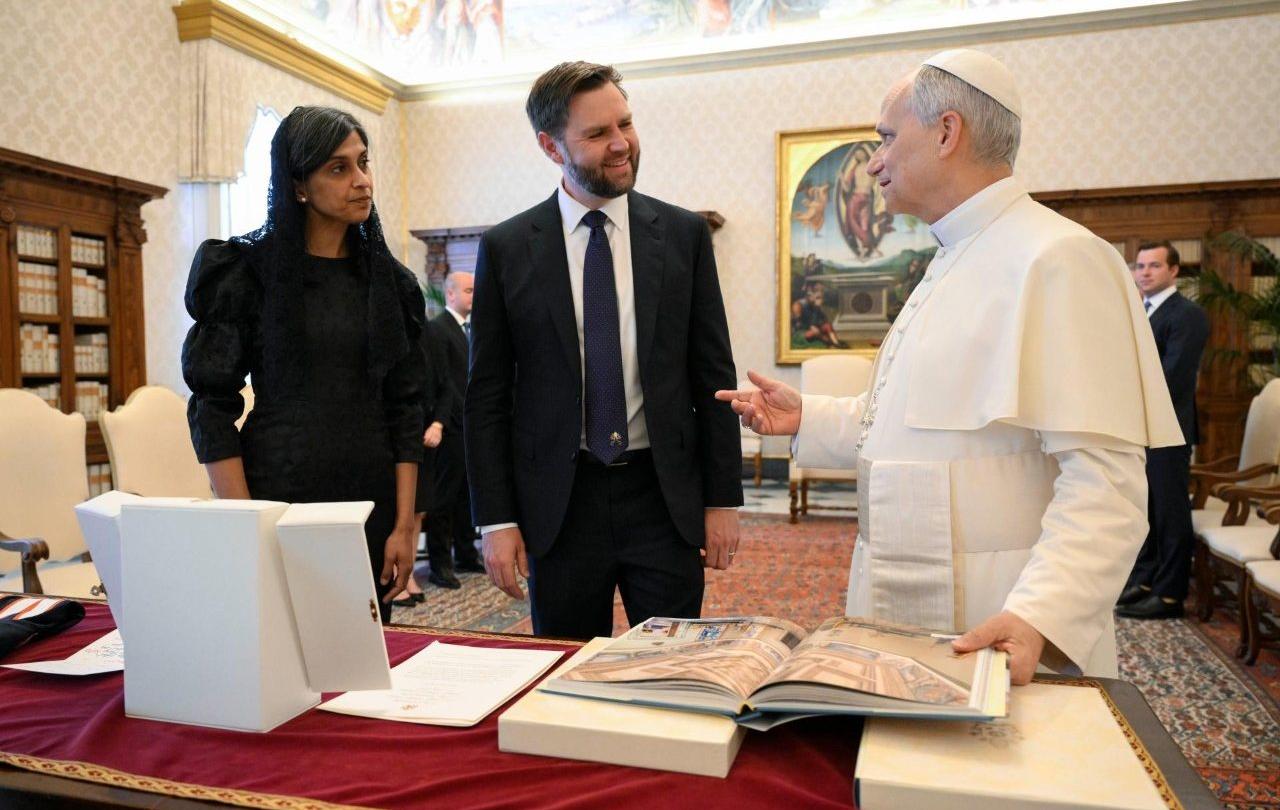
On Sunday morning, along with a host of bishops, patriarchs, priests and assorted others, I was led around the back of Peter's Basilica in Rome, into the cavernous spaces of that extraordinary building.
As we walked through the echoing church with the sunlight slanting through the windows like shafts of light from an angelic realm, our small group of Anglicans waited for our turn to walk out into the blinding sunshine. The names of the churches were ticked off like a game of ecclesiastical bingo: “Coptic Orthodox Church of Alexandria? OK.” Syriac Orthodox Church of Antioch? – This way please. “Armenian Apostolic Church – just wait a minute…”
As we moved through the front doors of the Church, the first thing we saw was a crowd of 200,000 people stretching as far as the eye can see. Behind us was the imposing face of St Peter’s, that great monument to Catholic supremacy and authority. The world’s media looked down from the balconies above us. Opposite our seats were the rich red velvet chairs ready for President Zelensky, J.D. Vance, and the heads of state of numerous countries across Europe and beyond.
As we walked out, I turned to a friend in our group, and instinctively said to him, “you'd need to be someone of remarkable humility not to let all this go to your head.”
I couldn't help thinking of Robert Prevost, who was about to walk through these doors, a man who was made a bishop in 2015 - only became a cardinal two years ago, and was now to find himself the focus of rapt attention by this vast crowd and millions of others on TV, as the spiritual leader of 1.4 billion Catholics, catapulted from relative obscurity to being the most famous man in the world within a couple of weeks.
St Peter’s is designed to impress. The piazza in front of the church is surrounded by imposing statues of apostles, saints, martyrs, and fathers of the church, all looking down on proceedings below. It was this church that inadvertently triggered the Reformation, as a fund-raising scheme for its construction involved selling some indulgences in Germany that raised Martin Luther’s fury. The frontage, with its soaring pillars, grand windows, sumptuous balconies and rich tapestries, is meant to overawe you. Inside, the space is huge, with vast windows letting in the light, stunning works of art everywhere. This was a display of the Renaissance papacy, leading into the Counter-Reformation, the confident Baroque spirit that announced the triumph of the Church over all its enemies.
A Pope with a streak of vanity would be a dangerous thing. Everything points to the power of this position – the successor of Peter, the one on whom the rock of the Church was to be built; the leader of the largest body of Christians in the world; someone instantly recognisable across the globe, to whom world leaders have to come, cap in hand. No wonder some popes in the past have become political manipulators, vying with emperors and kings over who has more power.
Yet these days, the Catholic Church sounds a humbler note. Pope Francis started the church down a line of ‘synodality’, inviting other voices into the church’s deliberations rather than just male priests. Pope Leo seems to want to continue down that line.
Referring to his election he said:
“I was chosen, without any merit of my own, and now, with fear and trembling, I come to you as a brother, who desires to be the servant of your faith and your joy, walking with you on the path of God’s love.”
The tone was not of self-aggrandisement, asserting the power of the position. There was no strategy to dynamically change the church and the world. No grand design to use the levers of power to shape society according to his vision. Instead, this was about unleashing a more elusive and uncontrolled force: the power of self-denying compassion.
As Pope Leo put it:
“The ministry of Peter is distinguished precisely by self-sacrificing love, because the Church of Rome presides in charity and its true authority is the charity of Christ. It is never a question of capturing others by force, by religious propaganda, or by means of power. Instead, it is always and only a question of loving as Jesus did.”
Now that’s different from the way popes have sometimes spoken in the past. The Church has no power other than the power of love – the kind of self-sacrifice seen in the life of Christ. If the pope ‘presides’, as Presidents do, he ‘presides in charity’. A little different from some other Presidents I can think of.
Admittedly we don’t know much about him yet, But Bob Prevost strikes you as a humble man. Someone who can turn down a place at Harvard Law School to go instead to serve the poorest communities in Peru for 20 years, sleeping on the floor of huts, travelling by donkey to remote villages, unnoticed and obscure, suggests a distinct lack of self-importance. You don’t canvas to become pope, announcing your candidacy, working your way up the ranks, arguing your merits to the electorate. Instead, you get on with what you do, and if the call comes, you follow it.
As Pope Leo, he will need that humility as he takes on this role for the rest of his life. He will need it to resist the subtle lure of the deference others offer him, the adulation he will receive wherever he goes, the buildings he lives in, the magnificence of the popes who went before him, the way people will hang on his very word. The temptation to think that Bob Prevost is, after all, a mighty big fish, someone whose talents have got him to this point will be strong.
But if he gives in to that temptation, he will slip back into the run of the mill way of the world, lording it over those he oversees. He seems aware of the slippery nature of such a position. Whoever was called to be the successor of St Peter, he said, needed to exercise oversight “without ever yielding to the temptation to be an autocrat, lording it over those entrusted to him. On the contrary, he is called to serve the faith of his brothers and sisters, and to walk alongside them."
It was Jesus who said:
“Among the nations, their rulers lord it over them. But it is not so among you. Whoever wants to be great among you must be your servant.”
Other Presidents, prime ministers and patriarchs could take a leaf out of that book.
Celebrate our 2nd birthday!
Since Spring 2023, our readers have enjoyed over 1,000 articles. All for free.
This is made possible through the generosity of our amazing community of supporters.
If you enjoy Seen & Unseen, would you consider making a gift towards our work?
Do so by joining Behind The Seen. Alongside other benefits, you’ll receive an extra fortnightly email from me sharing my reading and reflections on the ideas that are shaping our times.
Graham Tomlin
Editor-in-Chief





